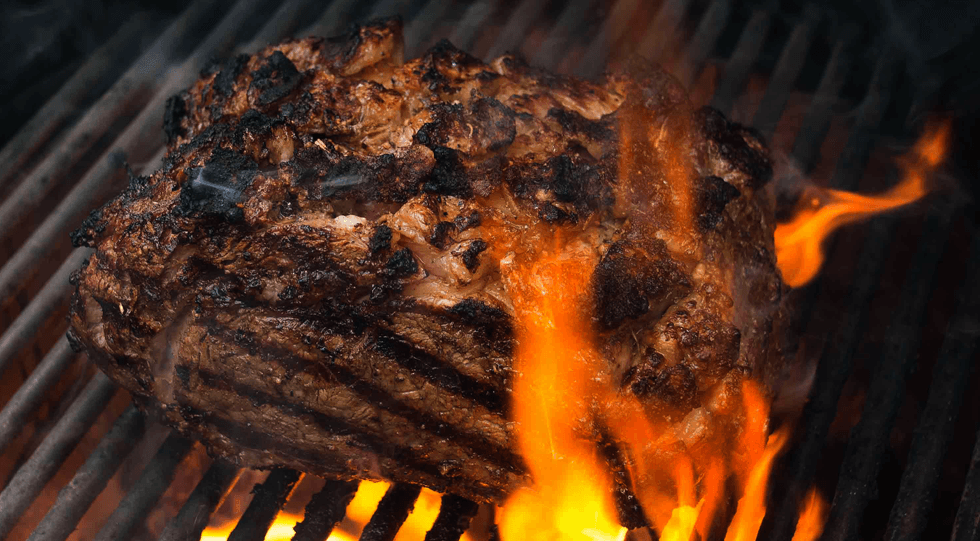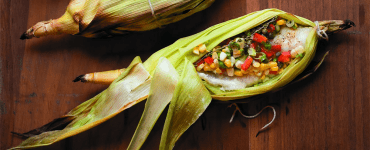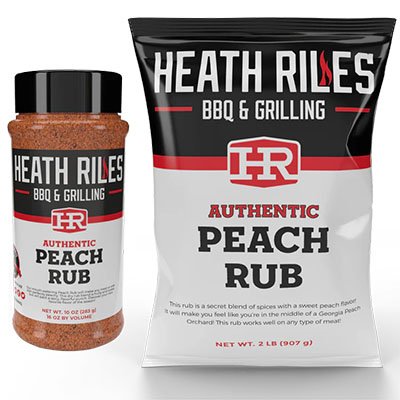
Dry aging is Science that takes over after Mother Nature has created tremendous proteins. Dry-aged beef has a extreme flavor, but can be expensive in restaurants, and even some quality butcher markets.
There is hope for grill masters, so don’t fret. If you own a refrigerator, you can dry-age beef at home.

Give this a look
Rib roast, also called prime rib, is from the rib section of the beef forequarter and isn’t just for the holidays … it’s for anytime.
What is dry aging?
Dry aging is a process where beef is aged in a temperature-controlled environment for a specific length of time. The meat is removed from its original packaging and refrigerated between 32-36 degrees Fahrenheit with relative humidity of 70-80 percent and airflow of 15-20 cubic feet per minute. The length of time for dry-aging should range from 28 to 50 days, sometimes as long as 100 days.
The longer the beef is dry-aged, the more pronounced the flavor. Since water evaporates from the meat during the aging process, dry-aging tenderizes the meat and concentrates the flavor. Trimming and water loss during aging will result in shrinkage of 25-30 percent of the meat’s original weight.
Aging Beef Factoids
- The aging process ceases as soon as the meat is frozen.
- The magic number for aging beef is between 14 and 28 days.
- Aging for anything less than 12-14 days will yield nonexistent results.
- Dry aging is only for uncut beef, i.e. rib racks, whole loins, etc. Performing a dry age on individual steaks will likely render the protein useless (except for jerky).
- Dry aging intensifies taste, not wet aging.
- Wet aging and dry aging increases tenderness.
Ranking tenderness?
Many different factors, from the animal’s breeding and nutrition to the way the meat is stored and prepared, can impact tenderness. Certain breeds of cattle have been selected and bred to have more tender beef, such as Angus. Feeding animals higher calorie diets with greater percentages of grain in the last few months prior to harvest also contributes to more tender meat. Stress factors, such as bad weather, may negatively impact tenderness.

after butchering
For beef, higher quality grades, such as Prime and Choice, are known for their more tender, juicer characteristics. Marbling and degree of doneness also go hand in hand. Marbling helps meat reach higher levels of doneness while remaining tender. Within an cow, certain cuts, such as tenderloins, are more tender; whereas, cuts from the limbs — chuck, round, and shoulder cuts — are known to be less tender.
The meat science gurus of the world developed a method for measuring and assessing the texture characteristics of meat and they call it the Warner-Bratzler Range test. It essentially tests the tenderness of meat, with emphasis on the texture and how much breakdown can increase tenderness.
To gauge the results of a sample of beef, scientists use Warner-Bratzler blades and measuring devices to capture the amount of force to cut each sample. It’s the industry standard for ranking tenderness and aid in setting market values of certain cuts.
Aging beef for great taste
All fresh beef in grocers, markets and butcher shops is aged for several days — sometimes several weeks — to allow enzymes in the meat to break down the muscle tissue (ewwww, rotting), resulting in preferred texture and intense flavor. There are two types of aging with beef — Wet aging and dry aging.
Wet aging
Wet aging is the norm among grocers and meat packers today. It refers to proteins that are vacuum sealed in plastic and age in their own liquids. Wet aging is a faster process than dry, and cheaper. Markets prefer wet aging because the meat doesn’t lose much of its weight while aging, as compared to dry aging.
In some cases, wet aging creates a strong “gamey” taste due to the liquids (not blood) retained in the packaging process.
Dry aging
Dry-aged beef is exposed to oxygen so dehydration can further concentrate the meat’s flavor. In addition to an increase in tenderness, the flavor of the beef is altered during this process from a combination of bacteria, enzyme breakdown and oxidation … Science, y’all!
Four steps to dry aging beef at home
Step One: Buy a prime or choice beef rib or loin roast from your favorite butcher. Buy local if there is a good supply of quality meats.
Step Two: Unwrap the beef, rinse it, and pat-dry with paper towels. Do not trim. Wrap the beef loosely in cheesecloth and set it on a cookie cooling rack in a shallow sheet pan to allow for air flow.
Step Three: Refrigerate for 14 to 20 days; the longer the beef ages, the tastier it gets. To keep the cloth from sticking, on every third day, carefully unwrap and then rewrap.
Step Four: When ready to grill, unwrap the beef and remove the hard, dried outer layer. Shave away any dried areas of fat, too, but leave behind as much of the lighter fat as possible. Season it up with your favorite beef spices. Grill whole or cut into steaks.
Dry aging safely
Be sure your refrigerator is set below 40 degrees Fahrenheit. Plan your grill session accordingly, and grill the prepped protein within a couple days of the concluded dry-age process.
Includes content from American Meat Science Association















Add comment